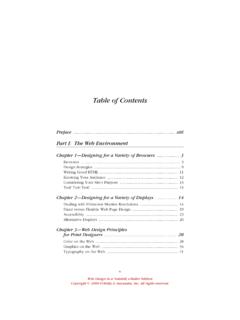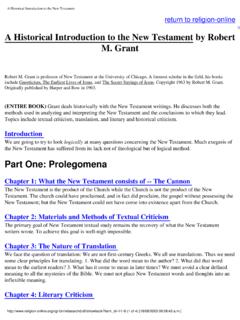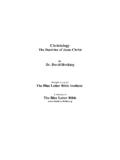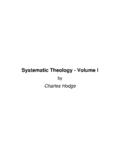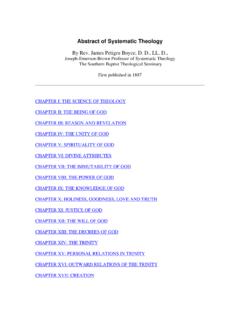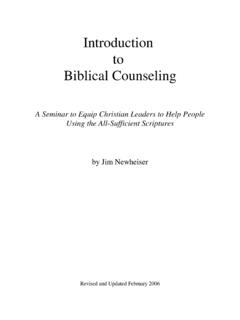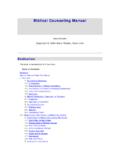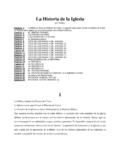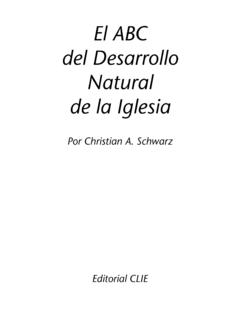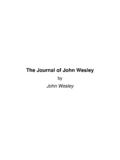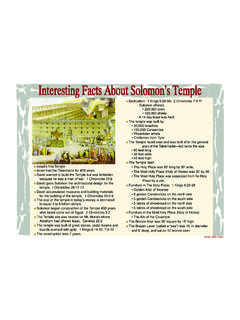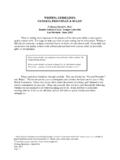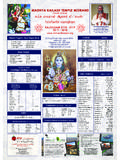Transcription of The Temple—Its Ministry and Services Alfred Edersheim Preface
1 The temple Its Ministry and Services Alfred Edersheim PrefaceIt has been my wish in this book, to take the reader back nineteen centuries; to show him Jerusalem as it was,when our Lord passed through its streets, and the Sanctuary, when He taught in its porches and courts; to portray,not only the appearance and structure of the temple , but to describe its ordinances and worshippers, the Ministry ofits priesthood, and the ritual of its Services . In so doing, I have hoped, not only to illustrate a subject, in itself mostinteresting to the Bible-student, but also, and chiefly, to sketch, in one important aspect, the religious life of theperiod in which our blessed Lord lived upon earth, the circumstances under which He taught, and the religiousrites by which He was surrounded; and whose meaning, in their truest sense, He came to fulfil. The temple and its Services form, so to speak, part of the life and work of Jesus Christ; part also of His teaching,and of that of His apostles.
2 What connects itself so closely with Him must be of deepest interest. We want to beable, as it were, to enter Jerusalem in His train, along with those who on that Palm-Sunday cried, Hosanna to theSon of David ; to see its streets and buildings; to know exactly how the temple looked, and to find our waythrough its gates, among its porches, courts, and chambers; to be present in spirit at its Services ; to witness theMorning and the Evening Sacrifice; to mingle with the crowd of worshippers at the great Festivals, and to stand bythe side of those who offered sacrifice or free-will offering, or who awaited the solemn purification which wouldrestore them to the fellowship of the Sanctuary. We want to seethese rites, as it were, before us to hear theTemple-music, to know the very Psalms that were chanted, the prayers that were offered, the duties of the priest-hood, the sacrificial worship in which they engaged, and the very attitude of the worshippers in short, all thosedetails which in their combination enable us vividly to realise the scenes, as if we ourselves were present in , amidst them all, we ever see that one great outstanding Personality, Whose presence filled that house withglory.
3 The New Testament transports us into almost every one of the scenes described in this book. It also makes frequentreference to them for illustration. We see the father of John ministering in his course in the burning of incense; theVirgin-Mother at her purification, presenting her First-born; the child Jesus among the Rabbis; the Master teachingin the porches of the temple , sitting in the Treasury, attending the various festivals, giving His sanction to thepurifications by directing the healed leper to the priest, and, above all, as at the Feast of Tabernacles, applying tohimself the significant rites of the Sanctuary. And, as we follow on, we witness the birth of the Church on the dayof Pentecost; we mark the frequent illustrations of spiritual realities by temple -scenes, in the writings of the apos-tles, but more especially in the Book of Revelation, whose imagery is so often taken from them; and we still lookfor the accomplishment of the one yet unfulfilled type the Feast of Tabernacles, as the grand harvest-festival ofthe Church.
4 I have thus placed the permanent Christianinterest in the foreground, because it occupied that place in my ownmind. At the same time, from the nature of the subject, I hope the volume may fulfil yet another and kindred pur-pose. Although it does not profess to be a Handbook of Biblical Antiquities, nor a treatise on the types of the OldTestament, both these subjects had to be constantly referred to. But to realise the gorgeous temple ritual, in all itsdetails, possesses more than a merely historical interest. We are indeed fascinated by it; we live over again, if notthe period of Israel s temporal glory, yet that of deepest interest to us; and we can vividly represent to ourselveswhat the temple had been before its Services had for ever passed away. But beyond this, stretching far backthrough the period of prophets and kings, and reaching up to the original revelation of Jehovah amid the awfulgrandeur of Sinai, our holiest recollections, and the very springs of our religious life rise among these ordinancesand types, which we here see fully developed and carried out, and that under the very light of His Presence, toWhom they all had pointed.
5 I say not, whether or how far later Jewish practice may have misapprehended the orig-inal import or the meaning of the Divine ordinances. That was beyond my present task. But an accurate acquain-tance with the sacrificial Services at the time of Christ must not only tend to correct mistakes, but throw a fresh andvivid light upon all, and influence our views of what the Levitical ordinances were intended to be and to teach. To have thus stated my object in this book, is also to have indicated its difficulties. Yet abundant materials for sucha work, though scattered far and wide, are within our reach. Not to speak of contemporary writings, as those ofJosephus and Philo, and references in the New Testament itself, we have in the Mishnaha body of authoritativetraditions, reaching up, not only to temple -times, but even to the days of Jesus Christ. (1) On this source of infor-mation, of course in conjunction with the Old Testament itself, I have been chiefly dependent.
6 While thus deriving my materials at first hand, I have also thankfully made use of any and every help within myreach. Foremost I place here the writings of Maimonides, not only because he is of greatest authority among theJews, but because his vast and accurate knowledge of these subjects, and the clearness and subtlety of his intellect,entitle him to that position. Next to him come the numerous writers on Biblical Antiquities, in Latin and German;works on Typology scientific and popular; treatises on the Life and Times of our Lord; histories of the JewishNation, or of Judaism; commentaries on such passages in the Old and New Testament as bore on these subjects;and numerous treatises on cognate points. In my study of ancient Jerusalem, I had the benefit of the labours ofrecent explorers, from Robinson and Barclay to the volumes published under the auspices of the PalestineExploration Fund. To the Cyclopaedias of Winer, Herzog, Ersch and Gruber, Dr.
7 Smith, and Kitto (the third edition), I have beengreatly indebted. The last-named of these works has the special merit of a series of articles on Jewish subjects (as Imay designate them), written in quite an original manner, and with most competent knowledge. Although, as willappear from the text, I have been obliged frequently to differ from their writer, yet these articles must, from thefulness and ability of their treatment, be of very great use to the student. Lightfoot s Horae Hebraicae etTalmudicaeare known to every scholar. Not so, perhaps, his small learned treatise De ministerio templi. The titleand many of the subjects are similar to those treated in the present volume. But the learned reader will at once per-ceive that the plan and execution are quite different, though the work has been of great service to me. Perhaps Iought not here to omit such names as Relandus, Buxtorf, Otho, Schottgen, Meuschen, Goodwin, Hottinger,Wagenseil, and Lundius; and, among modern writers, Bahr, Keil, Kurtz, de Wette, Saalschutz, Zunz, Jost, Geiger,Herzfeld, and Fratz, of whose works I have, I may say, constantlyavailed myself.
8 Many others have been consult-ed, some of which are quoted in the foot-notes, while others are not expressly referred to, as not adding anythingmaterial to our knowledge. In general, I should explain, that I have acted on the principle of giving the minimumof references possible. Itwould have been easy to have multiplied them almost indefinitely. But I wished to avoid cumbering my pages withan array of authorities, which too often give a mere appearance of learning; and, while they are not needed byscholars, may tend to interfere with the more general and popular use of such a work. For a similar reason, I havethroughout avoided the use of Hebrew and even Greek letter-press. To print an expression in Hebrew letters couldnot be necessary for students, while the general reader, whom it too often bewilders by a show of knowledge, mustin such case necessarily pass it over, unnoticed and unknown. While this book embodies the studies of many years, I have during its actual composition deemed no labour norpains irksome in comparing the results of my own investigations with those of all, within reach, who were entitledto such consideration.
9 Thus much for the matter of the book. As to its form, some subjects may be touched in itwhich do not equally interest all readers; (2) others may appear to have been treated with too little or else with toomuch detail; objections may be raised to interpretations of types, or even to the general view of the Old Testamentwhich has been taken throughout. My aim has been to make the book as complete and generally useful as I could,and clearly to express my convictions as to the meaning of the Old Testament. But on one point especially I wouldwish to be quite explicit. At the close of these studies, I would say, with humble and heartfelt thankfulness, thatstep by step my Christian faith has only been strengthened by them, that, as I proceeded, the conviction has alwaysbeen deepened that Christ is indeed the end of the Law for righteousness, to Whom all the ordinances of the OldTestament had pointed, and in Whom alone, alike the people and the history of Israel find their meaning.
10 Viewedin this light, the temple - Services are not so many strange or isolated rites, for the origin of which we must lookamong neighbouring nations, or in the tendencies natural to men during the infancy of their history. Rather, all nowbecomes one connected whole the design and execution bearing even stronger evidence to its Divine authorshipthan other of God s works, where every part fits into the other, and each and all point with unswerving steadfast-ness to Him in Whom the love of God was fully manifested, and its purposes towards the world entirely carriedout. From first to last, the two dispensations are substantially one; Jehovah, the God of Israel, is also the God andFather of our Lord and Saviour Jesus Christ Novum Testamentum in Vetere latet; Vetus in Novo patet. A. E. (1) Quite a different estimate must be formed of the Gemara(which in a general way may be described as atwofold commentary the Jerusalem and Babylonian Gemara upon the Mishnah), not only from its much laterdate, but also from the strange and heterogeneous congerieswhich are found in the many folios of the was, at the time of its compilation, already thoroughly ossified.
